
My favorite Grapevine historic/agri adventure is Nash Farm, the oldest operating farmstead in Tarrant County. It all began in 1843 when General Sam Houston negotiated a treaty of peace between the Republic of Texas and 10 American Indian nations with claims on the area. The following year, the first settlers started arrived in covered wagons. In 1859 Thomas Jefferson Nash came from Kentucky to the Grape Vine Prairie to create a better life for his family. He found a piece of farmland he loved and bought the farm for $500. It proved a good investment. Thomas, his family, and his brother, William, ran the farm for many years.
 |
| Journalists get a lesson in the mechanics of "washing machines" of the 19th century |
Thomas served in the Confederate army but the farm survived and remained in the family. It prospered until 1927, when Thomas's descendents sold it. In subsequent years it passed through different hands. Much of the land was sold. Then in 1997, the remaining 5.2 acres with house, barn, and family cemetery was bought by the Grapevine Heritage Foundation. I recently visited Nash Farm on a press trip to experience farm life and see chickens, turkeys, sheep, local crops and life as it was in Grapevine in the 1800s.
Cody Jolliff, one of the docents, met us at the gate and ushered us into yesterday. Inside the farmhouse, you have the feeling you are visiting the Nashes back in the late 1800s. It's like they still live there and may have just stepped out. The parlor is comfortable. It's obvious the Nashes are not wealthy; neither are they dirt poor. The room is neatly but sparsely furnished. The walls are papered and the wood floor covered with a colorful rug. The fireplace is the focal point with chairs, tables and a small settee scattered around. Gas lanterns on the wall are the lighting source. A game of checkers invites you on one of the tables.
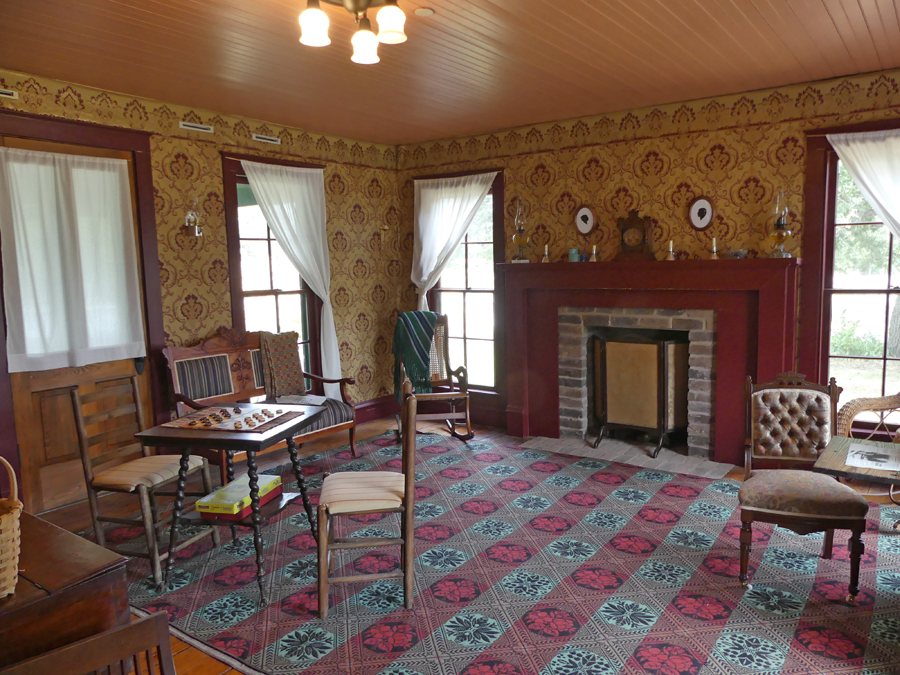 |
| The Nash family living room |
The bedrooms also give the impression of a family still in residence. Clothing and personal items are sitting on the simple wood beds and in open trunks. Tables hold personal possessions that one of the Nashes might have put there to have at hand. Here, things are simple. The floors and walls are a beautiful natural plank. Only the ceilings are painted a soft pink.
 |
| Typical farm bedroom of the 19th century |
In today's Nash Farm, we go through a long hall-like dining room to the kitchen. In his day, the kitchen and dining room were separate building. This was a common practice due to the danger of fires.
The kitchen is furnished as it would have been then and a smiling docent has a nice arrangement of snacks prepared. The sturdy black wood stove is always my favorite item in period kitchens.
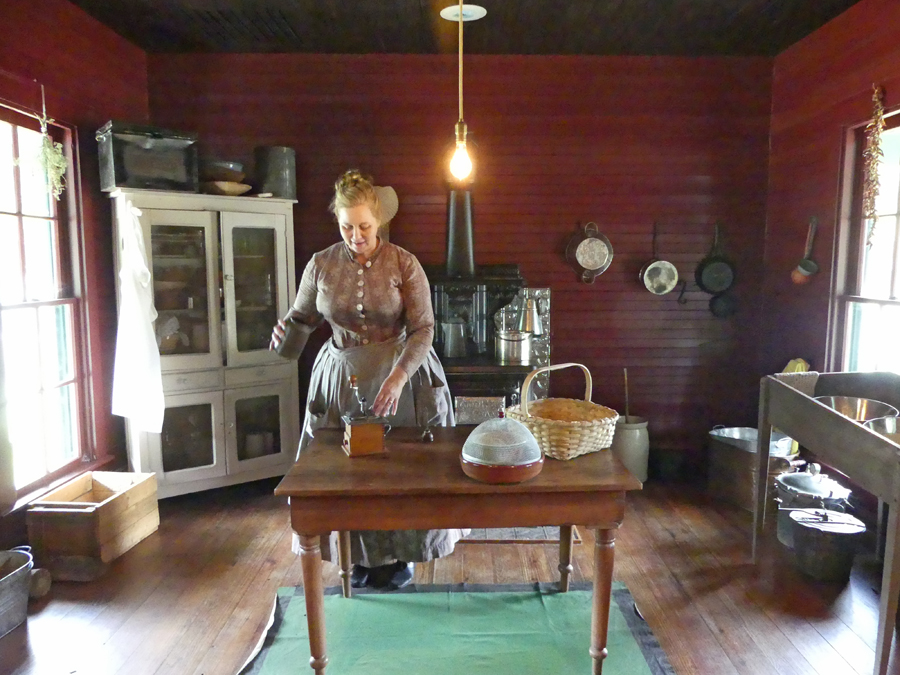 |
| An authentic farmhouse kitchen |
When you step out in the Nashes farmyard, you discover the reality of life on a 19th century farm. The chicken coop is close to the kitchen door for a good reason. How far would you want to go to get the ingredients for your breakfast omelet or (perish the thought) your Sunday fried chicken dinner? Actually, the chickens you find here are in little danger of ending up in the pot. They are Speckled Sussex, a heritage breed that was once on the endangered list and has been brought back by places like Nash Farm that act as a conservatory for such animals.
 |
| A Speckled Sussex chicken struts his stuff |
Just as most farmers of their era, there were other domestic fowl. We got to watch a few baby turkeys strutting around their incubators a little later in the tour.
 |
| Baby turkeys in an incubator |
Since we are thinking of what the Nash family eats, the smokehouse is the next stop. A costumed docent awaits there to explain the importance of a smokehouse in the time before refrigerators.
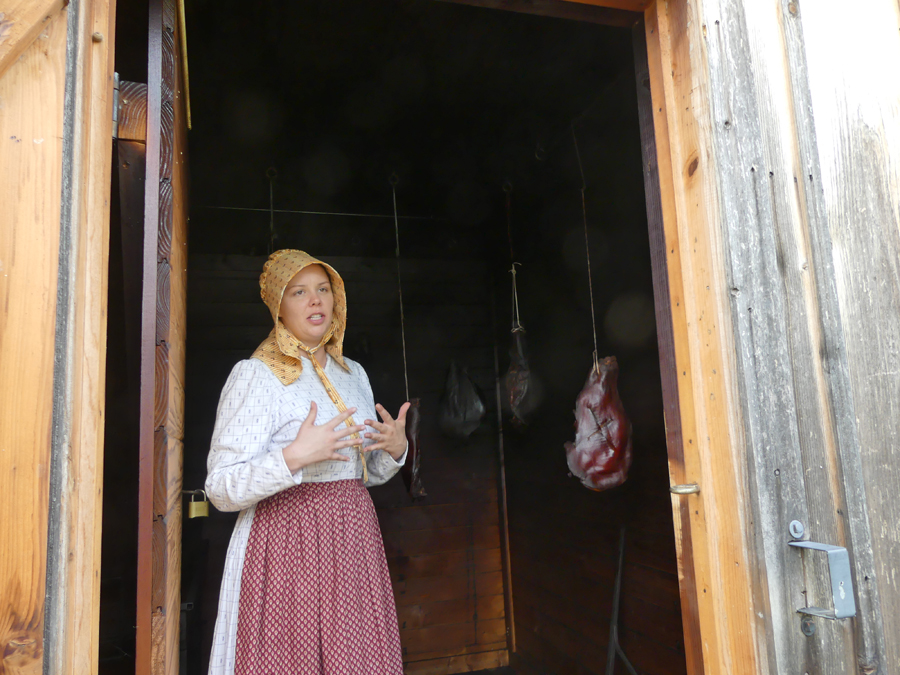 |
| A docent explains the importance of the smokehouse to 19th century life |
The pole barn was built in 1997 but still gives a feeling of authenticity to the farm. It serves as a display area and gift shop.
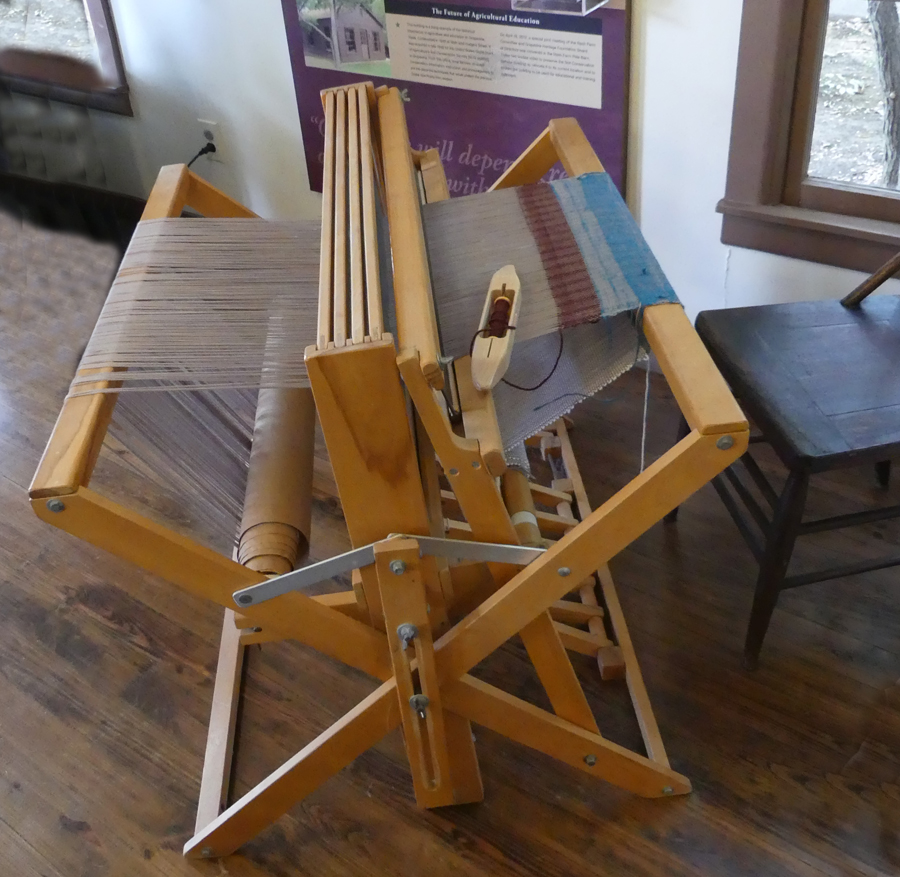 |
| A loom was another part of everyday life in that era |
The Soil Conservation Building was constructed in 1945. It's not original to Nash farm but was relocated from downtown Grapevine where it was used to teach farmers soil conservation methods. Here it offers a wonderful educational museum-style facility for visitors. It offers a look not only at farming methods but everyday household tasks like weaving.
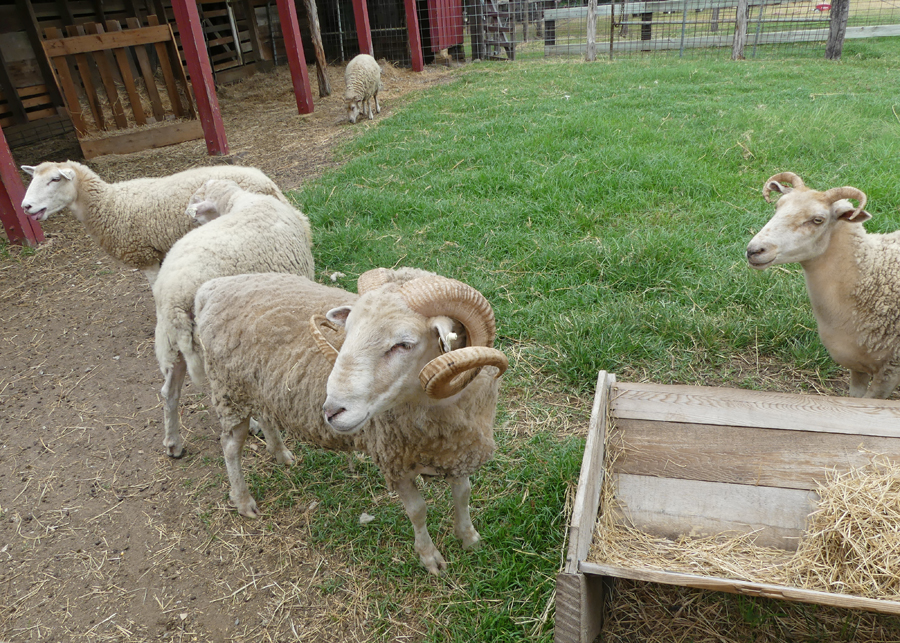 |
| Some Gulf Coast Sheep at Nash Farm |
At the barn, built in 1905 by the Nashes son, John, we were greeted by a farmer and a few happy Gulf Coast Sheep. These are an endangered breed that Nash Farms is nurturing. One enterprising ewe kept getting out of her enclosure and into the barn where she began chowing down on the feed. You can tell the sheep here are not underfed.
 |
| Don't miss the covered wagon |
Another do-not-miss item in the barn is a covered wagon much like the Nash family used to come from Kentucky to Grapevine.
The Nash family had 50 sheep. It's not known if they were Gulf Coast Sheep which were introduced to American by the Spanish in the 16th century. Sheep were an important source of not only food but revenue in Texas after the Civil War. Fleeces were sold to New England wool mills that paid well for Texas wool.
 |
| Just one of the collection of antique farm artifacts |
Next stop, the Equipment Shed, a modern building filled with antique treasures. It protects a collection of ancient farm implements ranging from hand held plows and animal drawn plows to early Farmall Tractors. If you like old machinery, you will be in Heaven here.
Speaking of Heaven, the furthest spot on the farm from the house is the Nash Family Cemetery. It's a quiet place, fittingly adjacent to the shed filled with retired machinery. Six members of the Nash family are buried there including Apolona Nash Payne, the oldest Nash child and her two children, Clint and Thomas. The marker is believed to have been carved by Thomas' brother William.
Returning to the house, you view the fields where commercial crops and fodder were grown and the Kitchen Garden. The Kitchen garden was where produce meant to be eaten by the family or preserved to see them through winters was grown. Lots of heirloom produce is grown at Nash Farm. Note the windmill at the rear of the house. It dates back to 1890.
I left with a deeper understanding of the simple farming life on the Grapevine Prairie and an appreciation of those hardy people who had, in a sense, been my host for the past hour.
The grounds are open free for self guided tours during regular business hours. The home is open for special events and may have a charge.
For more info:
http://www.grapevinetexasusa.com/nash-farm/







